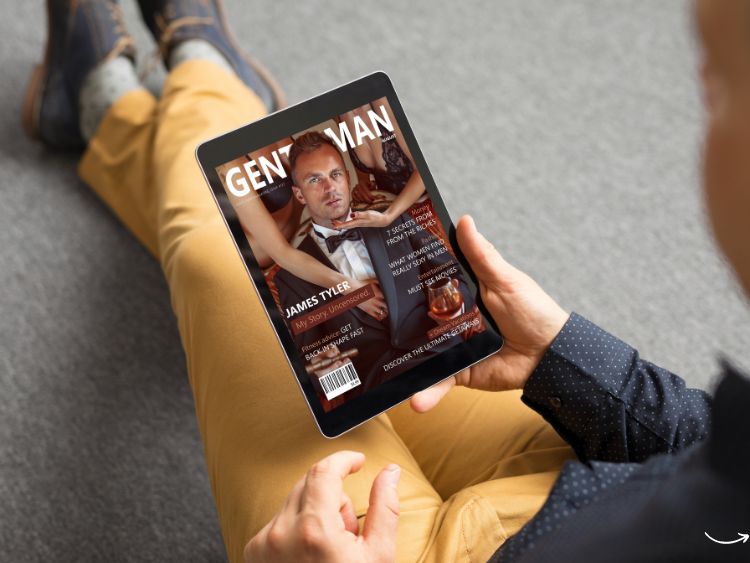The ABCs of High Fashion: A Comprehensive Guide to Style and Elegance
Fashion isn’t just about clothes; it’s a language, a form of expression that tells the world who you are without saying a word. But diving into the world of high fashion can be intimidating. With its rich history, evolving trends, and the allure of luxury, it’s easy to feel overwhelmed. That’s where the “ABCs of High Fashion Book” comes in—a guide that breaks down the complexities of high fashion into digestible, relatable content. Whether you’re a seasoned fashionista or a curious beginner, this book is your gateway to understanding the intricate world of haute couture, prêt-à-porter, and everything in between.
What is High Fashion?
Before we delve into the ABCs, let’s take a moment to understand what high fashion really means. High fashion, or haute couture as it’s known in French, refers to the creation of exclusive, custom-fitted clothing. It is the pinnacle of fashion, where creativity meets craftsmanship. Unlike mass-produced clothing, high fashion is all about uniqueness, luxury, and meticulous attention to detail. It’s about making a statement, pushing boundaries, and often, it’s where trends are born before trickling down to mainstream fashion.
The Importance of the ABCs of High Fashion Book
So, why does one need a book to navigate high fashion? Because fashion, especially at its highest levels, is laden with terminology, iconic figures, and unwritten rules that can be daunting for the uninitiated. The “ABCs of High Fashion Book” serves as a map, guiding readers through this often mystifying landscape with clarity and confidence. It breaks down the jargon, explains the history, and gives you the tools to not just understand but also appreciate the art of fashion.
A is for Avant-Garde
Let’s kick off the ABCs with A—Avant-Garde. In the world of high fashion, avant-garde represents the experimental and innovative. These are the designers and pieces that challenge the norm, often blending fashion with art. Think of Alexander McQueen’s breathtaking runway shows or the unconventional designs of Comme des Garçons. Avant-garde fashion isn’t just about clothing; it’s about making a statement, questioning societal norms, and pushing the boundaries of what fashion can be.
Understanding Avant-Garde
- Key Designers: Alexander McQueen, Rei Kawakubo, Iris van Herpen
- Iconic Pieces: McQueen’s “bumster” trousers, Kawakubo’s “Lumps and Bumps” collection
- Influence on Mainstream Fashion: While not everyone wears avant-garde, its influence is seen in how it challenges and eventually shapes mainstream trends.
B is for Bespoke
Next, we have B—Bespoke. This term is often used interchangeably with haute couture, but while they overlap, bespoke refers specifically to custom-made clothing. Bespoke garments are tailored specifically to the wearer’s measurements, ensuring a perfect fit. The process is intimate and detailed, often involving multiple fittings and a close relationship between the tailor and the client. In a world of fast fashion, bespoke is the antithesis, celebrating individuality and craftsmanship.
The Process of Bespoke Tailoring
- Consultation: Understanding the client’s needs and style.
- Measurements: Detailed measurements are taken for a perfect fit.
- Fabric Selection: Choosing from the finest materials.
- Fittings: Multiple fittings to ensure the garment is flawless.
- Final Product: A unique piece that’s tailored to perfection.
C is for Couture
And now, C—Couture. The word itself conjures images of luxurious fabrics, intricate details, and one-of-a-kind designs. But what exactly is couture? Simply put, couture refers to the creation of exclusive, custom-fitted fashion pieces. It’s the highest level of fashion design, where each piece is made by hand from start to finish. The term is protected by law in France, and only members of the Chambre Syndicale de la Haute Couture can legally use the term.
What Sets Couture Apart?
- Handcrafted: Every piece is handmade, often taking hundreds of hours.
- Exclusive: Couture pieces are one-of-a-kind or made in very limited numbers.
- Expensive: The price of couture reflects the time, materials, and expertise involved.
The Evolution of High Fashion
High fashion has evolved dramatically over the decades, reflecting broader social, political, and technological changes. In the early 20th century, designers like Coco Chanel and Christian Dior revolutionized women’s fashion, breaking away from the restrictive styles of the past. The 1960s brought about a wave of youthful rebellion, with designers like Yves Saint Laurent introducing the world to prêt-à-porter—ready-to-wear fashion that made high style more accessible.
Key Moments in Fashion History
- 1920s: The rise of Chanel and the flapper dress.
- 1947: Dior’s “New Look” revolutionizes post-war fashion.
- 1980s: Power dressing and the influence of pop culture.
The Role of High Fashion in Society
High fashion isn’t just about clothing; it’s a reflection of culture, identity, and aspiration. It has the power to influence everything from art and music to social movements and political statements. Designers like Vivienne Westwood used fashion as a form of protest, while brands like Gucci and Balenciaga challenge the concept of luxury with their bold, often controversial designs.
Fashion as a Cultural Force
- Art: Fashion often intersects with art, with designers collaborating with artists and even museums.
- Identity: Fashion allows individuals to express their identity, whether through gender-fluid designs or cultural references.
- Change: Fashion has the power to spark change, challenging societal norms and pushing for inclusivity.
D is for Draping
Moving on to D—Draping. Draping is the art of manipulating fabric to create fluid, often sculptural forms. It’s a technique that’s fundamental to high fashion, allowing designers to bring their visions to life in three dimensions. Draping can be seen in the elegant gowns of Valentino or the architectural designs of Issey Miyake. It’s a skill that requires not just technical expertise but also a deep understanding of fabric and form.
The Art of Draping
- Techniques: Draping on a dress form vs. flat pattern making.
- Materials: How different fabrics respond to draping.
- Designers to Watch: Valentino, Issey Miyake, Jean-Paul Gaultier.
FAQs About the ABCs of High Fashion Book
Q: Who should read the ABCs of High Fashion Book? A: Whether you’re a fashion student, a professional in the industry, or simply someone who loves fashion, this book is for you. It’s designed to be accessible to all, breaking down complex concepts into easy-to-understand terms.
Q: What makes this book different from other fashion guides? A: The ABCs of High Fashion Book isn’t just a dictionary of terms; it’s a comprehensive guide that delves into the history, techniques, and cultural significance of high fashion. It’s both educational and inspiring, with insights from industry experts.
Q: How can the book help me in my career? A: Understanding high fashion is crucial for anyone looking to work in the fashion industry. This book gives you the foundational knowledge you need to speak the language of fashion, understand the latest trends, and appreciate the artistry behind couture.
Q: Is high fashion only for the rich and famous? A: Not at all! While high fashion is often associated with luxury, it’s also about creativity, innovation, and personal expression. The principles of high fashion can be applied to any wardrobe, regardless of budget.
Conclusion: The Future of High Fashion
As we look to the future, high fashion will continue to evolve, influenced by technology, sustainability, and changing consumer values. The rise of digital fashion, where garments exist only in the virtual world, is just one example of how the industry is adapting. Sustainability is also becoming a key focus, with more designers embracing eco-friendly materials and ethical practices. The “ABCs of High Fashion Book” not only equips you with the knowledge of fashion’s past and present but also prepares you for its exciting future.
Authoritative Links:
- https://www.vogue.com
- https://www.cfda.com
- https://www.metmuseum.org/toah/hd/hfdn/hd_hfdn.htm
- https://www.businessoffashion.com
By embracing the knowledge within this book, you’re not just learning about fashion—you’re becoming part of its ongoing story.



